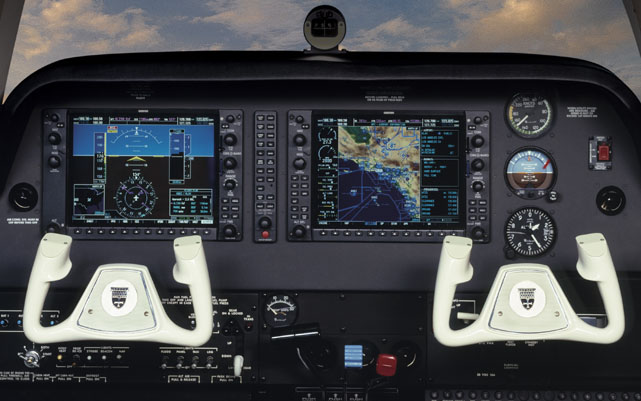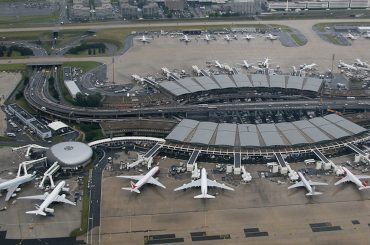 Every professional pilot has been taught about Crew Resource Management, but the most important crew member has been left out of the conversation – the relationship between pilot and airplane automation. Most of these relationships are constantly on the edge of divorce. Neither side is really listening to the other and each spends most of their time just telling each other what to do, rather than trying to understand each other’s opinions.
Every professional pilot has been taught about Crew Resource Management, but the most important crew member has been left out of the conversation – the relationship between pilot and airplane automation. Most of these relationships are constantly on the edge of divorce. Neither side is really listening to the other and each spends most of their time just telling each other what to do, rather than trying to understand each other’s opinions.
The Point of Contention
By the time they go to the counselor for therapy (Chief Pilot’s office), the relationship is ruined. Someone is in trouble, but the pilot is always going to take the blame. The automation will always believe its opinions are correct so there is no way to convince it otherwise. Sometimes during an argument, pilots need to say fine, I’m done with you. I’m a pilot, so I know how to fly this thing without you! Click. Off with automation. Go to your separate corners, make sure you have a clear understanding of the automation’s opinion before re-engaging. Don’t re-engage until you only pay attention to the systems that are functioning correctly. Do you have two good engines, with normal indications? Focus on the positive first, then deal with the problem child in the systems family.
The Dysfunctional Relationship
The growing trend of recent fatalities, in both Business Aviation and the Airlines, is the misunderstanding between the pilot and the automation they’re trying to have a relationship with. Consistently, the problem lies in the pilot misunderstanding the variables of a selected setting, but also automation having an erroneous belief and then demanding that the pilot react to this incorrect input.
The Challenger 601 crash in March 2018 was a result of this dysfunctional relationship. The short story is that there was a discrepancy between the airspeed indicators. There was severe turbulence and icing condition forecasted up to FL450 that day. The captain’s side indicated an overspeed condition with warning clacker so during a climb up to FL380, the captain brought both engines to idle (First Officer pleads with Captain to disregard his airspeed indicator. Normal engine settings.), then in complete contrast to what the captain thought was happening, they received the correct stick-shaker indication that the captain ignored while putting the aircraft into a deep stall, flaming out both engines, and within nine minutes of a misunderstanding between pilot and computer, all 11 people became part of a mountainside. Lots of layers here (maybe core lock too?), but all a result of responding to passive aggressive automation.
Initial reports from the Lion Air 610 crash have similar divorce qualities, but the airplane automation took it one step further. Even with autopilot off, internal automation (MCAS) kept screaming at the pilots to listen to it, by shaking the stick, moving the trim and forcing the nose over to comply with a faulty AOA indicator. Two good engines, one false indication and all 189 people onboard had to suffer the consequences of this toxic relationship.
‘Til Death Do Us Part
As with all relationships, in the beginning, it’s bliss as you learn new things about each other. Ahhh, you can do vertical navigation for me, really? Oh, thank you. Can you navigate us down a perfect ILS approach to minimums? Oh my, that’s lovely. EFB, Auto-throttle, FADEC, Auto Emergency Descent, Automatic Ground Spoilers, thank you. Then, time moves on and because each is so reliable, the relationship becomes so co-dependent, complacency sets it. The pilot neglects their basic piloting skills because no matter how good you are, the autopilot is better. It’s perfection. Pilots are a bit jealous, but it makes our job so much safer and we look so good when the flying is smooth. We can fly around the world in complex airspace safer than we ever have before. Then, suddenly, for no apparent reason, the automation feels neglected. It thinks you’re not paying it enough attention so out of nowhere, it misbehaves. We’re shocked because we love it so much, it’s hard to believe it’s going to let us down, so we initially want to trust it. We follow it down the wrong path and when we realize the deception, we can’t find our way back to the truth.
Renewing Your Vows

The reality is that pilots must know and train for so many different things, it’s impossible to train for all the variables. So we need to train for the default of all those variable; raw, basic pilot skills. But, that also means we need to convince engineers that indeed, things do happen even if they think it’s going to be impossible. Just ask the B747 crew that had all three INS units fail, or the Beechjet pilots that had dual engine flameout, or the B777 that had dual engine flameout on final because of ice crystals, or every flight crew that has two or all three AHARs flight displays showing different indications, or every CFIT victim. The impossible happens all the time.
We can’t predict the variable, but we can bolster the chances of the outcome of that variable by have a fallback on the most reliable system in the cockpit – the pilot. They made it to the professional cockpit for a reason. Because there was a day when they knew how to fly a crappy old airplane. It broke all the time and the pilot had to do everything. Hand fly in IFR while reaching for charts and approach plates, talking to ATC, and doing full procedure turns.
It’s time to go back to your pilot memory bank when you were blissfully happy flying a crappy old airplane. To remember that basic, intimate relationship you had with an aircraft that didn’t tell you what to do, so you had to listen, understand, and then tell it what you wanted it to do.
It’s hard to remember those days as we move into higher, faster and more complex airplanes, airspace rules and regulations. Our GOM suggests we turn on the autopilot right after takeoff…but, is it a rule? Sometimes it is. I used to frustrate the pilots I flew with because at least once a week, I’d hand-fly the airplane up to cruising altitude. Sure, I sucked compared to my autopilot, but how many pilots have forgotten just how hard it is? It really is. But I could do it. I was sweating by the time we got to cruising altitude, but I knew the feel of it.
S & M on the Side

With the pilot shortage, we all see the trend. We don’t have the luxury of having young pilots spend lots of time in old airplanes. We’re putting newer pilots in more complex airplanes that require automation. It’s no one’s fault, it’s just the necessity of the industry. Training in a full-motion simulator is incredibly accurate, except for the full seat-of-the-pants feel of an actual airplane. The sound, the feel, the internal gyros of your own body that can deceive you or save your life.
Full-motion Sim instructors (consider them your S & M on the side) have a long checklist they need to fill to get you through your checkride, but if you get done early, ask them to give you an usual emergency. They’d love to do it, just ask. The weirder the better.
Healthy Relationship
There is a reason why empty leg flying comes with higher risk so keep this in context, but empty legs are a good time to get back to the roots of an intimate relationship with your airplane. If you’re not sure what all the functions of your vertical navigation can do, try using it on your empty leg. Tell the other pilot what you’re doing, learn together. This is not the time to begin an action with “Hey, watch this…”. This is the time to say “Hey, I’m not sure what this function is on the autopilot, do you? Can you show me, can we try it out?”
The last, and most important, is understanding your aircraft systems. What happens to MCAS if you have a faulty AOA? When the stick shaker is going off and the trim is running away is not a good time to figure out where that switch or circuit breaker is. I teach Aircraft Systems and Propulsion and I spend most of my time explaining how one system can affect so many variables that pilot input makes the difference between life and death. It’s not understanding each system, it’s about understanding the relationship each system has with each other.
When you get in the cockpit today, take a moment to look at your airplane and decide that today, you’re going to be a better spouse. Agree to learn something about it that you didn’t already know and make the commitment to keep the communication going both ways. The airplane will love you for it…
Originally published by Erika Armstrong www.achickinthecockpit.com













